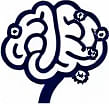Creative Problem Solving: A Key Mental Model for Innovation
 by Marlene Keeling
by Marlene Keeling
Creative problem solving offers tools to tackle challenges with fresh ideas, enhancing decision-making in psychology and business. This mental model boosts cognitive skills and practical strategies for everyday use, making it essential for professionals and learners.

Creative problem solving stands as an essential mental model that helps individuals approach challenges with originality and efficiency. In its core, this model involves generating innovative ideas and applying them to real-world issues, fostering better outcomes in various fields.
The Basics of Creative Problem Solving
At its foundation, creative problem solving draws from cognitive processes that encourage breaking away from routine thinking. This approach combines analysis and imagination to address obstacles, making it a vital tool for cognitive development. For instance, it often starts with identifying the core issue and then exploring multiple perspectives to find solutions.
In psychology, this mental model links to how the brain forms new connections. Studies show that practices like reframing problems can lead to breakthroughs, aiding personal growth and emotional resilience. Professionals in business use it to adapt strategies, turning potential setbacks into opportunities for advancement.
Applying Creative Problem Solving in Daily Life
One effective way to implement this model is through structured techniques. Brainstorming sessions, for example, allow groups to generate ideas freely without immediate judgment. This method promotes collaboration and uncovers unique solutions that might otherwise remain hidden.
In business contexts, mental models like this one help refine strategies. Leaders might use it to innovate products or streamline operations, drawing from past experiences to inspire new directions. Similarly, in cognitive development, individuals can apply it to personal goals, such as learning new skills or overcoming habits.
Consider a scenario where a team faces a project delay. By applying creative problem solving, they might redesign the workflow, incorporating feedback from diverse sources. This not only resolves the immediate issue but also builds a culture of innovation.
Techniques and Examples
Several practical techniques enhance creative problem solving. Lateral thinking, for one, involves looking at problems from unconventional angles. This can include asking "what if" questions to spark new ideas.
In psychology, therapists often use this model to help clients reframe negative thoughts. By encouraging alternative viewpoints, it supports mental well-being and personal progress. In business, companies like tech firms apply it to product development, leading to inventions that meet market needs.
Here are some steps to get started:
- Identify the problem clearly to focus efforts.
- Generate ideas without limits, using tools like mind maps.
- Evaluate options based on feasibility and impact.
- Test solutions and refine as needed.
These steps show how mental models can simplify complex tasks, making them accessible for beginners.
Benefits for Professionals and Learners
For professionals, creative problem solving sharpens decision-making skills, especially in fast-paced environments. It encourages adaptability, allowing individuals to thrive amid change. In cognitive development, regular practice strengthens neural pathways, improving overall thinking abilities.
Learners benefit by applying this model to education and career paths. It transforms challenges into learning experiences, fostering a mindset of continuous improvement. Over time, it builds confidence and creativity, essential traits in modern work settings.
Real-world examples illustrate its value. In education, students use it for group projects, leading to more engaging outcomes. In business, it drives marketing campaigns that resonate with audiences, boosting engagement and results.
Challenges and Overcoming Them
While beneficial, creative problem solving can sometimes face barriers, such as fixed mindsets. To counter this, individuals should practice regularly, perhaps through daily exercises that challenge assumptions.
In team settings, clear communication ensures ideas flow smoothly. This model thrives when people share diverse viewpoints, enriching the process. By addressing these aspects, users can maximize its potential in both personal and professional spheres.
Final Thoughts
Creative problem solving remains a cornerstone of effective mental models, offering a pathway to innovation and growth. Its applications span psychology, business, and cognitive development, providing tools for anyone seeking to enhance their approach to challenges. By integrating it into routines, individuals can achieve greater success and fulfillment.
